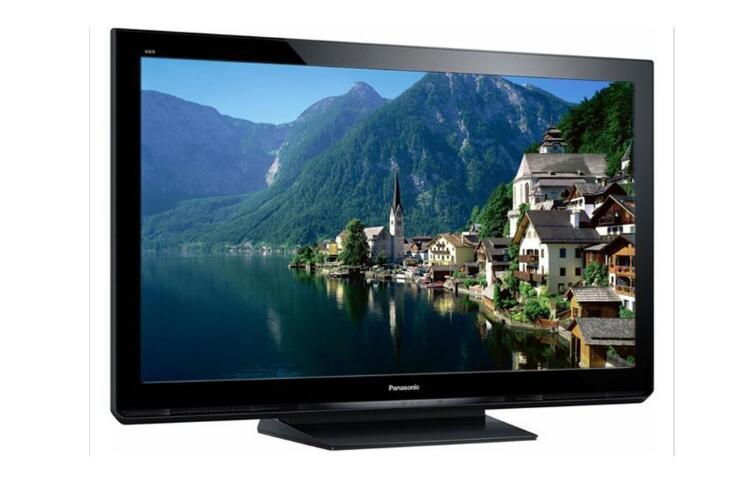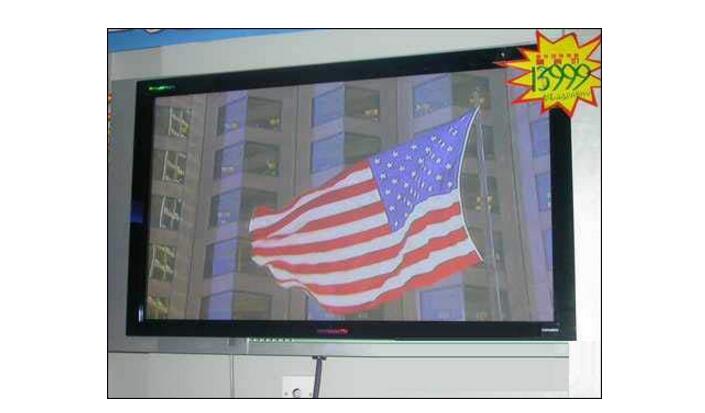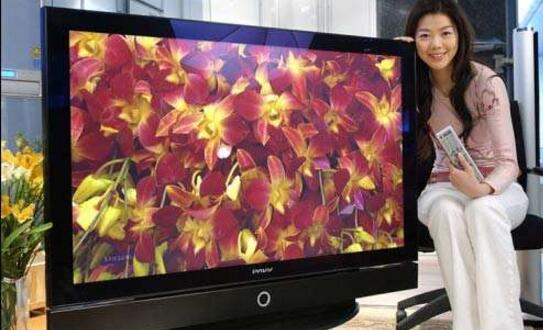The full name of Plasma TV is PlasmaDisplayPanel, which is called Plasma TV in Chinese. It is a device that injects a mixed gas between two ultra-thin glass plates and applies voltage to use phosphor to emit light for imaging. Compared with CRT display, it has the characteristics of high resolution, large screen, ultra-thin, rich and bright colors. Compared with LCD, it has the characteristics of high brightness, high contrast, large viewing angle, bright colors and rich interfaces.
Plasma display technology can be divided into two categories: direct-current PDP with electrodes in direct contact with gas and alternating-current PDP with dielectric layer covered on the electrodes according to their working methods. There are three main types of color PDPs researched and developed: single substrate type (also known as surface discharge type) AC PDP, dual type (also known as opposite discharge type) AC PDP and pulse storage DC PDP.

Plasma display screen is a display device using gas discharge, this screen uses a plasma tube as a light-emitting element. A large number of plasma tubes are arranged together to form the entire full screen. Each plasma tube serves as a pixel, and each pixel is composed of three different colors of luminous bodies-red, green, and blue. The combination of light and dark and color changes of these pixels produces images of various grayscales and colors, which is very similar to the principle of CRT. The central element of the plasma tube is the plasma, which is a gas composed of free-flowing ions (charged atoms) and electrons (negatively charged particles). Under normal circumstances, the gas is mainly composed of uncharged particles, that is, a single gas molecule includes the same number of protons (positively charged particles in the nucleus) and electrons, negatively charged electrons and positively charged particles The protons maintain a perfect balance, so the net charge of the atom is zero.
If you put some electrons into the gas by increasing the voltage, it will immediately change. The free electrons collide with the atoms and make the number of electrons in the atoms unbalanced, which will make them positively charged. And produced ions. If a current flows through the stable plasma, the negatively charged particles will rush to the areas of positively charged particles, and the positively charged particles will also kill the areas of negatively charged particles.
In such a movement, the particles of both sides continuously collide. These impacts excited the gas atoms in the plasma, causing them to emit light. This working principle is very similar to ordinary fluorescent lamps.
The small cell corresponding to each plasma on the plasma display screen is filled with neon and xenon atoms, and emits light when they are hit. In general, the light emitted by these atoms is only ultraviolet light, and ultraviolet light cannot be discerned by the human eye. But it is these ultraviolet light that excites the phosphor and produces the light we can see.

The principle of plasma screen lighting is similar to fluorescent lamps. It uses a plasma tube (each plasma tube is a basic pixel) as a light-emitting element. The screen uses glass as a substrate, and the substrate is separated by a certain distance (dot pitch). One by one discharge space. When a voltage is applied to the electrode, the neon-xenon mixed gas in the discharge space will exhibit a plasma discharge phenomenon. The gas discharge generates ultraviolet rays. The ultraviolet rays irradiate the phosphor, and the phosphor obtains energy to excite visible light and display an image.
Power board: provide power to the screen, other functional modules on the screen, our own motherboard, and video processing board.
X drive board: generate and provide drive signals for the X electrodes according to the timing signals sent from the logic board.
Y drive board: Generate and provide drive signals for the Y electrodes according to the timing signals sent from the logic board.
Logic board: processing the image signal sent from the main board, generating addressing driving signals and providing the necessary driving signals for X, Y driving boards and address boards.
Logic BUFFER board (E, F, G): Convert the data signal and control signal sent from the logic board to the signal required by COF.
YBUFFER board (upper and lower): transmits the scanning signal on the Y drive board to the screen, which is divided into upper and lower parts.
COF: Convert the signal sent from the logical BUFFER board to the address signal for the screen.
FPC: The scan signal sent from the logic Y-BUFFER board (upper and lower) is connected to the Y scan electrode on the screen.

VOZOL D5 Vape are so convenient, portable, and small volume, you just need to take them
out of your pocket and take a puff, feel the cloud of smoke, and the fragrance of fruit surrounding you. It's so great.
We are China leading manufacturer and supplier of Disposable Vapes puff bars, vozol d5 disposable vape,vozol d5 vape kit,
vozol d5 vape pen, and e-cigarette kit, and we specialize in disposable vapes, e-cigarette vape pens, e-cigarette kits, etc.
vozol d5 disposable vape,vozol d5 vape kit,vozol d5 vape pen,vozol d5 vape 1000 puffs,vozol d5 e-cigarette 1000 puffs
Ningbo Autrends International Trade Co.,Ltd. , https://www.mosvapor.com